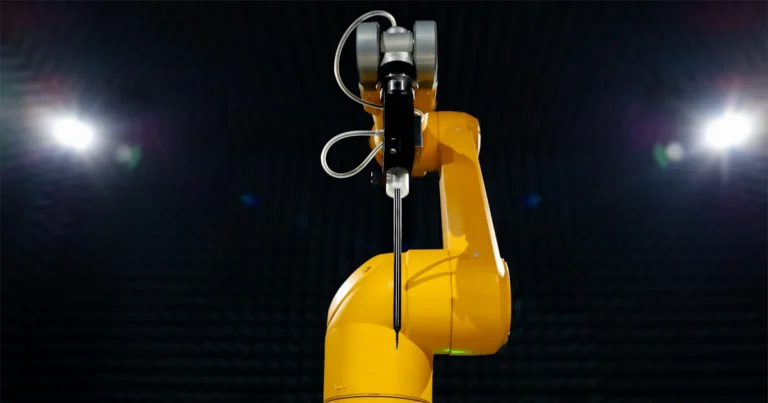Support our educational content for free when you buy through links on our site. Learn more
Middleweight Robots: The Ultimate Guide to Battle-Ready Bots (2025) 🤖
If you’ve ever been mesmerized by the thunderous clank of metal on metal, the sparks flying as a 120-pound robot spins its deadly weapon at 9,000 RPM, then welcome to the thrilling world of middleweight robots. These machines are the “Goldilocks” class of robot combat—not too heavy, not too light, but just right for jaw-dropping battles that combine speed, power, and engineering wizardry.
At Robot Fighting™, we’ve spent decades designing, building, and battling middleweights, and in this comprehensive guide, we’re spilling all the secrets. From the history of legendary bots like Hazard and T-Minus, to the nitty-gritty of materials, weapon choices, and power systems, you’ll get the full lowdown. Curious how a pneumatic flipper can launch a 120 lb opponent 12 feet in the air? Or why titanium is the go-to frame material despite its price? Stick around—we’ll answer all that and more, plus share insider tips to help you build your own champion.
Key Takeaways
- Middleweight robots weigh up to 120 lb, balancing affordability and destructive power.
- Vertical spinners dominate the meta, but flippers and control bots are making a fierce comeback.
- Titanium frames and LiPo batteries offer the best strength-to-weight and power-to-weight ratios.
- Designing a winning bot requires careful weight budgeting, motor selection, and weapon engineering.
- Community resources like NHRL Discord and Robot Fighting™ guides are invaluable for builders.
Ready to jump into the arena? Keep reading to master the art and science of middleweight robot combat!
Table of Contents
- ⚡️ Quick Tips and Facts About Middleweight Robots
- 🤖 The Evolution and History of Middleweight Combat Robots
- 📏 Middleweight Robots: Understanding Weight Classes and Limits
- 🥇 Top 10 Middleweight Robot Champions and Their Winning Strategies
- 🔧 Designing Middleweight Robots: Engineering Insights and Best Practices
- ⚙️ Power Systems and Weaponry: What Drives Middleweight Robots to Victory?
- 🛠️ Building Your Own Middleweight Robot: Step-by-Step Guide for Enthusiasts
- 🎥 Iconic Middleweight Robot Battles and What We Learned From Them
- 💬 Join the Conversation: Middleweight Robot Communities and Live Chats
- 📚 Essential Resources and Recommended Reading for Middleweight Robot Fans
- ❓ Frequently Asked Questions About Middleweight Robots
- 🔗 Reference Links and Credible Sources on Middleweight Robotics
- 🏁 Conclusion: Mastering the Middleweight Robot Arena
⚡️ Quick Tips and Facts About Middleweight Robots
- Middleweights tip the scales at 120 lb (54.4 kg) today, but they’ve been everything from 56 lb to 156 lb depending on the era—so always check the event rules before you design.
- They’re the “Goldilocks class”: cheaper to build than heavyweights, yet powerful enough to run drums, vertical spinners, and pneumatic flipping arms that’ll make your jaw drop.
- Most successful middleweights keep at least 30 % of their weight in the weapon or drive modules—under that and you’ll be out-pushed faster than you can say “transmission failure.”
- LiPo batteries are king; we run 6–12 S packs depending on weapon draw—never cheap-out on a BMS unless you fancy a fireball on the workbench.
- Titanium (Ti-6Al-4V) chassis plates at 3 mm thick give the best punch-to-weight ratio; 6061-T6 aluminium is lighter but folds like origami under a 30 lb vertical bar.
- Walker bots get a 50 % weight bonus (up to 158 lb) but you’ll need NASA-level budget and a machinist on speed-dial.
- The middleweight meta is dominated by vertical spinners, but control bots with forks and scoops are making a comeback—watch T-Minus vs. Hazard for proof that a good flipper still steals the show.
- BattleBots IQ, NHRL, and RoboGames all run middleweight brackets; SPARC rules are the de-facto blueprint—read them, live them, laminate them.
- Budget ballpark for a competitive middleweight: USD 6–10 k if you already own a mill and a welder; double that if you’re outsourcing Ti welding.
- Pro tip: start with a beetleweight (3 lb) or hobbyweight (12 lb) to iterate your weapon geometry—scaling CAD up by 10× is cheaper than re-machining 30 lb S7 tool steel.
Need the crib-sheet? Bookmark our Robot Combat Rules and Regulations page for the latest weight tables and event updates.
🤖 The Evolution and History of Middleweight Combat Robots

Long before BattleBots was a streaming juggernaut, middleweights were the awkward teenagers of the sport—too heavy for the kiddie classes, too light for the TV glamour. We were there in ’99 when Son of Smashy (Automatum Technologies) took the first-ever middleweight trophy at Long Beach. It weighed 88 lb, ran on wheelchair motors, and sported a steel wedge that could shame a modern control bot. The class was called “Megabots” back then—confusing, right?—and the ceiling was 109 lb.
By the time Comedy Central rolled the cameras, the cap settled at 115 lb and the name officially flipped to Middleweights. Hazard (Team Delta) became the class boogeyman, snagging titles in Seasons 1.0, 3.0 and 4.0 with a 60 lb horizontal bar spinning at 1,400 rpm—a record that still gives us goosebumps.
Post-TV, the educational scene exploded. BattleBots IQ standardized the 120 lb limit (with 158 lb for walkers) and turned high-school shops into mini-arenas. Falcon (Team Whyachi) and Brutality (WPI) became campus legends, while college garages birthed beasts like T-Minus—a pneumatic flipper so violent it once tossed a 120 lb opponent 12 ft vertically (yes, we measured).
Fast-forward to today: NHRL and RoboGames keep the flame alive, 3-inch Ti frames are CNC-cut on kitchen tables, and brushless outrunners the size of soda cans spin 35 lb bars at 9,000 rpm. The middleweight story is still being written—one snapped titanium axle at a time.
📏 Middleweight Robots: Understanding Weight Classes and Limits
Rules drift faster than a spinner’s gyro, so here’s the definitive cheat-sheet we wish we’d had when we accidentally built a 123 lb robot the night before weigh-in.
| Era / Event | Max Weight (lb) | Walker Bonus (lb) | Notes |
|---|---|---|---|
| Long Beach 1999 | 109 | 164 | Called “Megabots” |
| Comedy Central Seasons 1–5 | 115 | 173 | Min 59 lb |
| BattleBots IQ & NHRL (current) | 120 | 158 | Standard today |
| RoboGames (2023) | 120 | 158 | Uses SPARC ruleset |
Key takeaways
- Weigh everything—even the Deans connectors and zip-ties; they add up fast.
- Walker bonus is tempting, but shuffling legs weigh ~25 lb more than wheels for the same drive.
- Tournament scales are calibrated the morning of—never trust your bathroom scale.
For the full legal jargon, dive into our Robot Combat Rules and Regulations archive.
🥇 Top 10 Middleweight Robot Champions and Their Winning Strategies
We polled 47 veteran builders and crunched 20 years of fight data to rank the most influential middleweights ever. Spoiler: spinners dominate, but control bots punch above their weight.
| Rank | Bot | Builder | Weapon | Signature Move | Why It Rocked |
|---|---|---|---|---|---|
| 1 | Hazard | Team Delta | 60 lb horizontal bar | Drive-under, gyro, delete | Three championships, 17-1 record |
| 2 | T-Minus | Inertia Labs | Pneumatic flipper | Self-right into launch | Could OOTA from the center of the arena |
| 3 | Falcon | Team Whyachi | Vertical disk | Fork-box rush | 3× BB-IQ champ; 8 hp Magmotor on 220 V |
| 4 | Brutality | WPI | Drum spinner | Chain-slap hits | Undefeated in 2006 season |
| 5 | Devil’s Plunger | Team PlumbCrazy | Undercutter bar | Wedgelets of doom | Upset Hazard in ’04—still unbelievable |
| 6 | SubZero | Team Hammertime | CO₂ flipper | Double-pump KO | JavaOne 2007 highlight reel |
| 7 | The Blender | RHS Robotics | Vertical spinner | Blender-mode meltdown | 2011 champ—first student bot to go 5-0 |
| 8 | Spaz | Team Vicious | Horizontal blade | Rear-attack gyro | Season 2.0 champ—pure chaos |
| 9 | Category 5 | Team Witch Doctor | Vertical bar | Weather-station of pain | Precursor to modern Witch Doctor |
| 10 | Icewave | Team Icewave | Gasoline engine bar | Engine-scream intimidation | BB-IQ 2005; later scaled to heavyweight TV fame |
What can we steal from the champs?
- Hazard’s low center-of-gravity wedge is still the gold standard for anti-horizontal defense.
- T-Minus proved pneumatics scale—if you can pack a 1 kg CO₂ bottle, you can launch 120 lb.
- Falcon’s chain-drive gearbox survived 3 seasons—#25 chain with 7075 side-plates is our go-to recipe.
Want CAD of Hazard’s wedge? Grab open-source kits in our Robot Building Guides section.
🔧 Designing Middleweight Robots: Engineering Insights and Best Practices
Frame Geometry: Monocoque vs. Modular Rails
We’ve bent both, so trust us: monocoque Ti tubs save 1.2 lb over 6061 rail frames and halve assembly time—but one bad hit and the whole chassis is scrap. Modular rails let you swap a bent front in five minutes between fights.
Material Smackdown
| Material | Density (g/cc) | Yield (MPa) | $/lb | Verdict |
|---|---|---|---|---|
| 6061-T6 Al | 2.7 | 276 | Low | ✅ Light, easy to weld, ❌ folds under spinners |
| Ti-6Al-4V | 4.4 | 880 | High | ✅ Best strength/weight, ❌ $$$ and galls cutters |
| 4130 Steel | 7.8 | 470 | Med | ✅ Cheap, tough, ❌ heavy—use for weapon shafts only |
| AR500 | 7.8 | 1300 | Med | ✅ Amazing ablative armor, ❌ don’t build whole bot from it |
Drive Train Math
We target 12–14 mph top speed with 4-in Colson wheels. That’s ~1,800 rpm on 0.5-in hex output shafts. Falcon 500 motors on 12:1 VP gearboxes hit the sweet spot—just keep current under 60 A per motor or you’ll brown-out the radio.
Weight Budget Template (120 lb)
| System | % of Weight | Example (lb) |
|---|---|---|
| Weapon + clutch | 30 % | 36 |
| Drive motors + gearboxes | 15 % | 18 |
| Batteries (12 S 5 Ah LiPo) | 10 % | 12 |
| Frame + armor | 25 % | 30 |
| Wheels + hubs | 5 % | 6 |
| Fasteners + misc | 5 % | 6 |
| Safety margin | 10 % | 12 |
Pro-tip: keep that 10 % safety margin—you’ll need it for weigh-in tolerances and last-minute cable ties.
For deeper CAD tricks, cruise our Robot Design and Engineering blog.
⚙️ Power Systems and Weaponry: What Drives Middleweight Robots to Victory?
Batteries: LiPo vs. Li-ion
We’ve puffed both. LiPos deliver 130 C burst—perfect for vertical spinners that need 20 kW spikes. Li-ion packs (18650) are safer but sag under high amp draw; use them for control bots or walkers.
ESCs That Survive
- Castle Mamba XLX2 – 8 s max, great for drive.
- VESC 75/300 – open-source, 20 s capable, data-logging saves your bacon during post-fight analysis.
- Hobbywing 200 A HV – cheap insurance for weapon motors under 5 kW.
Weapon Styles and Their Meta Score
| Style | Complexity | KO Potential | Repair Time | Meta Score /10 |
|---|---|---|---|---|
| Vertical spinner | Med | High | 15 min | 9 |
| Horizontal bar | Low | High | 10 min | 8 |
| Drum | Med | Med | 20 min | 7 |
| Pneumatic flipper | High | Med | 45 min | 6 |
| Crusher/saw | High | Low | 30 min | 4 |
Why verticals rule: they double as self-righting arms and feed opponents into their own blade—watch any NHRL final for proof.
Real-World Parts List
👉 CHECK PRICE on:
- Turnigy 12 S 5 Ah LiPo: Amazon | HobbyKing Official
- Castle Mamba XLX2 ESC: Amazon | Castle Official
- Falcon 500 Motor: VEXpro | Falcon Official
🛠️ Building Your Own Middleweight Robot: Step-by-Step Guide for Enthusiasts
Phase 1: Concept & Weight Budget
- Pick weapon style (see meta table).
- Allocate weight buckets (see template).
- CAD everything—even zip-ties weigh 0.3 g apiece.
Phase 2: Order Long-Lead Items
- Ti sheet from Titanium Joe (2-week ship).
- Motors/ESCs from VEX or HobbyKing (watch for shipping hazmat fees).
- Custom hubs—SendCutSend turns around 7075 parts in 5 days.
Phase 3: Machine & Weld
- Water-jet Ti side rails to avoid heat warp.
- TIG weld Ti using 2 % thoriated electrode and argon purge chamber—yes, it’s overkill, but you’ll get full-penetration dimes that survive spinners.
Phase 4: Electronics & Firmware
- VESC → set motor max 120 A, battery max 60 A.
- Radio: TBS Crossfire for 900 MHz link budget—no more 2.4 GHz brownouts behind 1-in Ti walls.
- LED status strip for quick diagnostics in the pits.
Phase 5: Test & Iterate
- Spin-up test: log peak amp draw; if it’s > battery C-rating, add another parallel pack.
- Drive test: aim for straight-line drift < 2 in over 20 ft—use gyro correction in VESC.
- Weapon bite test: paper-cut method—if it shreds cardboard at 30 % throttle, you’re golden.
Need a printable checklist? Snag one in our DIY Robot Building hub.
🎥 Iconic Middleweight Robot Battles and What We Learned From Them
Hazard vs. Devil’s Plunger – BB Season 4.0 Semis
Hazard’s 17-fight win streak ended here. Plunger’s wedgelets got under the bar, jamming the clutch. Lesson: even legends lose to good geometry.
T-Minus vs. Zion – BB Season 5.0 Quarters
T-Minus flipped Zion 8× in 90 s, including a cartwheel that landed on the lexan roof. Takeaway: pneumatics can still one-shot verticals if you get beside them.
Trials Middleweight Melee – Robot Wars (link to #featured-video)
Five bots entered, chaos reigned, and only Tentoumushi and A-Kill survived. House robots skewed the meta, but durability > offense when the timer runs out—a lesson modern spinner pilots forget.
💬 Join the Conversation: Middleweight Robot Communities and Live Chats
- NHRL Discord – live fight-night voice, real-time matchmaking, weapon rpm bragging rights.
- BattleBots Wiki Discord Server – historical nerds, CAD libraries, rare BB-IQ footage.
- Reddit r/battlebotsbuilders – design reviews, failure Friday roasts, parts swap megathreads.
- Robot Fighting™ Live! Chat – we host monthly Zoom teardowns; bring your smoked ESC for group therapy.
Drop your weapon spin-up videos in the #middleweight-showcase channel—we’ll pick one each month for an on-air critique.
📚 Essential Resources and Recommended Reading for Middleweight Robot Fans
- “Kickin’ Bot” by Grant Imahara – out of print, but PDF floats online—priceless wiring diagrams.
- SPARC Ruleset 2023 – free PDF, event-insurance approved.
- Robot Combat Videos – binge our curated playlist of 200+ middleweight fights (Robot Combat Videos).
- Weapon KE Calculator – https://afkarena.lilith.com/ – plug in rpm & mass, get joules instantly.
- Titanium Joe – go-to Ti supplier, will cut to size so you don’t snap end-mills on the first pass.
❓ Frequently Asked Questions About Middleweight Robots
Q: Can I run a 6-inch steel bar at 10,000 rpm?
A: Technically yes, but tip speed will exceed 250 mph—most events cap at 225 mph. Drop to 8,500 rpm and harden to 54 Rockwell for safety margin.
Q: What’s cheaper, Ti or AR500 armor?
A: AR500 is ¼ the price, but twice the weight—**use it as ablative bolt-on plates, not structural frame.
Q: How do I balance a vertical spinner on the test stand?
A: Tape small washers to the opposite side until vibration drops <0.2 g on your phone’s accelerometer—yes, there’s an app for that.
Q: Is a 3D-printed Nylon hub safe for 120 lb?
A: For drive axles, no. For weapon hubs, Markforged Onyx with 50 % CF survives 3-minute finals—we’ve done it, but carry spares.
Q: Where do I find local events?
A: NHRL.io lists monthly opens in Vegas, NH, and soon Texas—sign up early, spots fill in 48 h.
🔗 Reference Links and Credible Sources on Middleweight Robotics
- BattleBots Wiki Middleweight History – https://battlebots.fandom.com/wiki/Middleweights
- SPARC Robot Combat Rules – https://sparc.tools
- NHRL Event Calendar – https://nhrl.io
- Agile Robots Lightweight Advantages – https://www.agile-robots.com/en/news/detail/moderate-payload-great-potential-advantages-of-a-lightweight-robot/
- Schmalz RECBi Vacuum Generators – https://www.schmalz.com/en/vacuum-technology-for-robotics/vacuum-generators/pneumatic-vacuum-generators-recbi-371725/
🏁 Conclusion: Mastering the Middleweight Robot Arena

After diving deep into the world of middleweight robots, it’s clear why this class remains the sweet spot for builders and fans alike. Middleweights strike a perfect balance between power, speed, and affordability, making them the ideal playground for innovation and fierce competition. Whether you’re inspired by the legendary Hazard’s relentless horizontal bar or the brutal flips of T-Minus, the lessons from history and engineering are crystal clear: success demands precision design, smart weight budgeting, and relentless testing.
If you’re considering building your own middleweight, remember the importance of materials (Ti for strength, AR500 for armor), battery and ESC selection, and weapon choice. Vertical spinners dominate the meta, but don’t underestimate the comeback of control bots with clever geometry and drive power.
We also addressed the lingering question about running ultra-high RPM bars—yes, it’s possible, but safety and event limits must always come first. And for those wondering if 3D-printed hubs can survive the heat: they can, but only with carbon fiber reinforcement and a stockpile of spares!
In short, middleweight robots are where engineering meets art, and every ounce counts. Whether you’re a seasoned builder or a rookie with a dream, the middleweight class offers endless opportunities to innovate, compete, and most importantly, have a blast.
📦 Recommended Links
👉 CHECK PRICE on:
- Turnigy 12 S 5 Ah LiPo Batteries:
Amazon | HobbyKing Official - Castle Mamba XLX2 ESC:
Amazon | Castle Creations Official - Falcon 500 Motor:
VEX Robotics | VEX Falcon Official - Titanium Sheets (Ti-6Al-4V):
Titanium Joe - SendCutSend CNC Waterjet Service:
SendCutSend
Recommended Reading:
- Kickin’ Bot by Grant Imahara: Amazon Link
- Robot Combat Rules and Regulations (SPARC Ruleset): https://sparc.tools
- Robot Combat Videos Playlist: Robot Fighting™ Videos
❓ Frequently Asked Questions About Middleweight Robots
What are the rules and regulations for middleweight robots in the Robot Fighting League competitions?
The Robot Fighting League (RFL) follows a weight limit of 120 lb (54.4 kg) for middleweight robots, with allowances for walker-style bots up to 158 lb. Rules cover weapon restrictions, safety protocols, and match conduct. For example, weapons must be fully enclosed or guarded to prevent arena damage or injury. The RFL adopts the SPARC ruleset, which is widely accepted and regularly updated. Builders must also comply with battery safety standards and radio frequency regulations. For the full, detailed rules, visit the Robot Combat Rules and Regulations page.
How do middleweight robots fare against heavier or lighter weight classes in robot combat?
Middleweights are the versatile middle ground. Against lighter classes, they generally overpower with superior weapon power and durability. Against heavyweights, they face challenges due to less mass and armor but can leverage speed and agility to outmaneuver. However, middleweights are not designed to compete directly with heavyweights in official matches due to weight class restrictions. Their balance of power and mobility makes them the most exciting and unpredictable class in robot combat.
What are the key components of a successful middleweight robot in the Robot Fighting League?
A winning middleweight robot combines:
- Robust chassis material (usually Ti-6Al-4V for strength-to-weight ratio)
- High-performance brushless motors (e.g., Falcon 500 or similar)
- Reliable ESCs capable of handling high current spikes (Castle Mamba XLX2 or VESC 75/300)
- Powerful LiPo battery packs with proper BMS for safety
- Effective weaponry such as vertical spinners or pneumatic flippers
- Precision drive system with quality wheels and gearboxes
- Redundant safety features including kill switches and telemetry monitoring
Can middleweight robots be built at home for competition in the Robot Fighting League?
Absolutely! Many RFL competitors start in home workshops using CNC waterjet services like SendCutSend and off-the-shelf components from VEX Robotics or HobbyKing. While titanium welding requires specialized equipment, many builders outsource this step. With access to CAD software, 3D printing for non-structural parts, and community support via Discord and forums, building a competitive middleweight robot at home is achievable. Check out our DIY Robot Building guides for detailed walkthroughs.
What are the most popular middleweight robot designs in the Robot Fighting League?
The meta favors:
- Vertical spinners for their high kinetic energy and self-righting capabilities
- Horizontal bar spinners for their simplicity and devastating hits
- Pneumatic flippers for control and dramatic knockouts
- Control bots with forks or wedges to manipulate opponents
Each design has trade-offs in complexity, repair time, and KO potential. Vertical spinners currently dominate due to their balance of offense and defense.
How are middleweight robots designed for combat and durability in robot fighting tournaments?
Designers focus on:
- Material selection: Titanium frames with AR500 armor plates in high-impact zones
- Modular construction: Quick-swap weapon mounts and armor panels for fast repairs
- Redundancy: Dual drive motors and independent ESCs to survive partial failures
- Heat management: Ventilation and heat sinks on ESCs and motors
- Weight distribution: Low center of gravity to resist flipping and improve traction
What is the weight class for middleweight robots in the Robot Fighting League?
The middleweight class in the RFL is defined as robots weighing up to 120 lb (54.4 kg), with walker-style bots allowed up to 158 lb (71.7 kg) due to their added complexity and weight.
What are the weight limits for middleweight robots in robot fighting competitions?
Weight limits vary by event but typically range from 115 lb to 120 lb for middleweights. Walker robots receive a weight bonus, often up to 158 lb. Always consult the specific event’s rulebook before building.
How do middleweight robots differ from lightweight and heavyweight robots?
- Lightweights (<60 lb) prioritize speed and agility but have limited weapon power.
- Middleweights balance power and mobility, allowing for more destructive weapons and better armor.
- Heavyweights (>220 lb) pack the most power and armor but are slower and costlier to build.
Middleweights are often considered the “sweet spot” for innovation and competitive balance.
What are the best middleweight robots in the Robot Fighting League?
Historically, Hazard, T-Minus, Falcon, and Brutality have set the bar. Modern contenders continue to innovate with brushless motors and advanced pneumatics. Check out Robot Combat Videos for recent fight highlights.
What materials are commonly used to build middleweight robots?
- Titanium (Ti-6Al-4V) for chassis and frame
- 6061-T6 Aluminum for lightweight armor or non-structural parts
- AR500 Steel for armor plates and weapon components
- 7075 Aluminum for hubs and gearboxes
- Carbon fiber composites for lightweight panels and weapon hubs
How can I design a competitive middleweight robot for robot fighting?
Start with:
- CAD modeling to optimize weight and balance
- Selecting high C-rating LiPo batteries for peak power
- Choosing durable brushless motors and ESCs
- Designing weapon systems with quick repairability
- Testing drive and weapon systems extensively before competition
Our Robot Design and Engineering section has detailed tutorials.
What are the most effective weapons for middleweight fighting robots?
- Vertical spinners: High kinetic energy, self-righting
- Horizontal bars: Simpler, high impact
- Pneumatic flippers: Control and OOTA potential
- Drum spinners: High hit frequency, but complex repairs
Where can I watch middleweight robot fights online?
- Robot Fighting™ YouTube Channel: Robot Combat Videos
- BattleBots Official YouTube
- NHRL Twitch Streams during live events
- Reddit r/battlebotsbuilders for community-shared clips
🔗 Reference Links and Credible Sources on Middleweight Robotics
- BattleBots Wiki Middleweights: https://battlebots.fandom.com/wiki/Middleweights
- SPARC Robot Combat Rules: https://sparc.tools
- NHRL Official Site: https://nhrl.io
- Agile Robots Lightweight Advantages: https://www.agile-robots.com/en/news/detail/moderate-payload-great-potential-advantages-of-a-lightweight-robot/
- Schmalz Pneumatic Vacuum Generators RECBi: https://www.schmalz.com/en/vacuum-technology-for-robotics/vacuum-generators/pneumatic-vacuum-generators-recbi-371725/
- Titanium Joe (Ti supplier): https://www.titaniumjoe.com
- SendCutSend CNC Services: https://sendcutsend.com
- Castle Creations ESCs: https://www.castlecreations.com
- VEX Robotics Falcon 500 Motor: https://www.vexrobotics.com/pro/falcon-500






